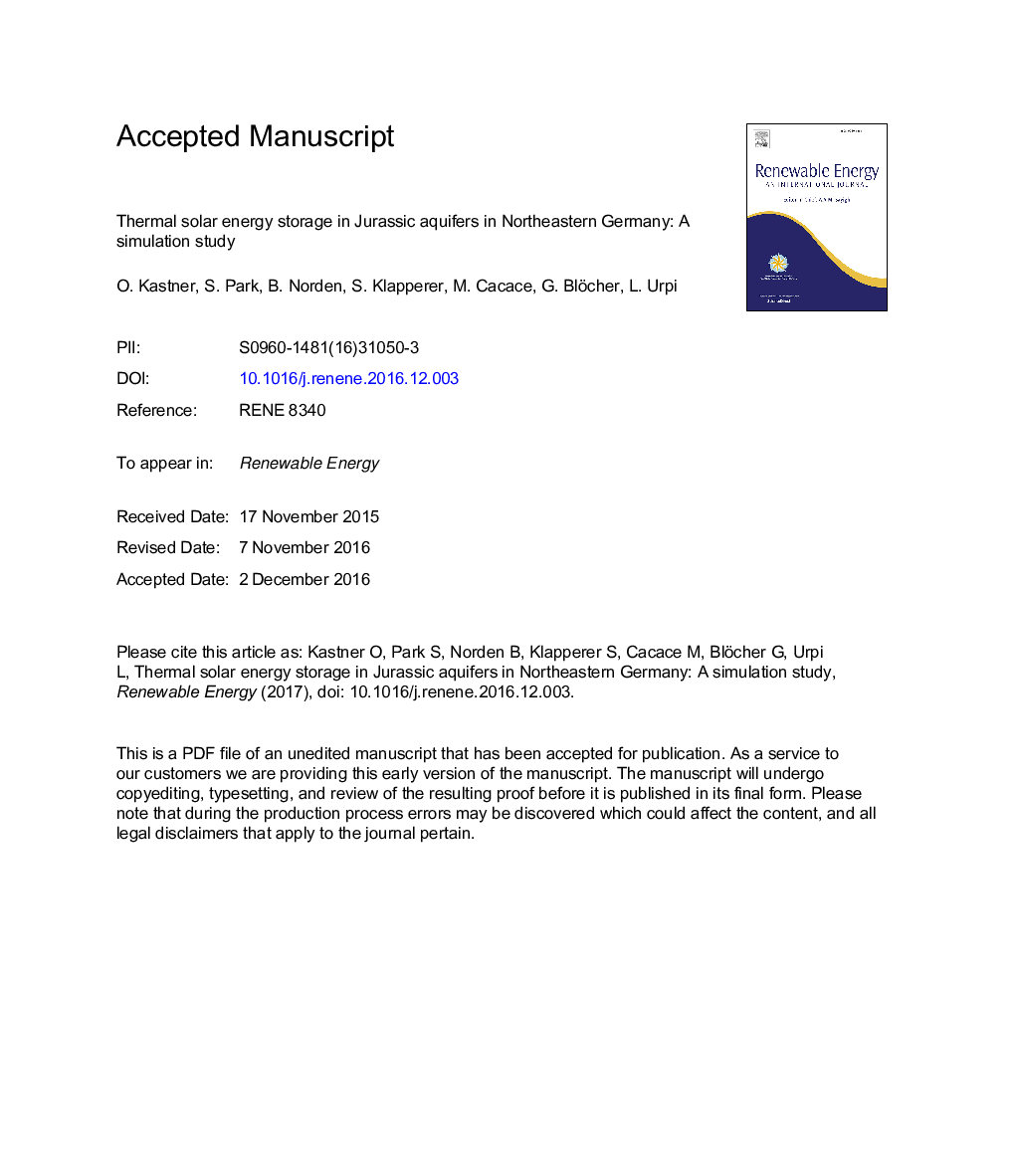| Article ID | Journal | Published Year | Pages | File Type |
|---|---|---|---|---|
| 4926791 | Renewable Energy | 2017 | 35 Pages |
Abstract
This contribution studies the usability of aquifer thermal energy storage (ATES) for seasonal solar heat storage by means of thermo-hydraulic modeling. The geological setting refers to the North East German Basin (NEGB), specifically a site approx. 50 km west of Berlin, Germany. The considered storage formation is located in Jurassic sandstones at about 270 m depth below surface, showing an in-situ (undisturbed) formation temperature of around 17 °C and appropriate hydraulic storage properties. The paper considers idealised doublet systems in faulted as well as unfaulted reservoir domains and studies the energy- and mass transport of simulated ATES systems. Five perennial loading/unloading series of solar thermal energy are investigated, assumed to be harvested by a hectare-sized flat plate collector field which is modeled employing climate data of the considered region. The simulation results exemplarily show how the storage system develops temperature-conserving recovery fractions of up to 80% heat recovery during the first years of operation.
Related Topics
Physical Sciences and Engineering
Energy
Renewable Energy, Sustainability and the Environment
Authors
O. Kastner, B. Norden, S. Klapperer, S. Park, L. Urpi, M. Cacace, G. Blöcher,
